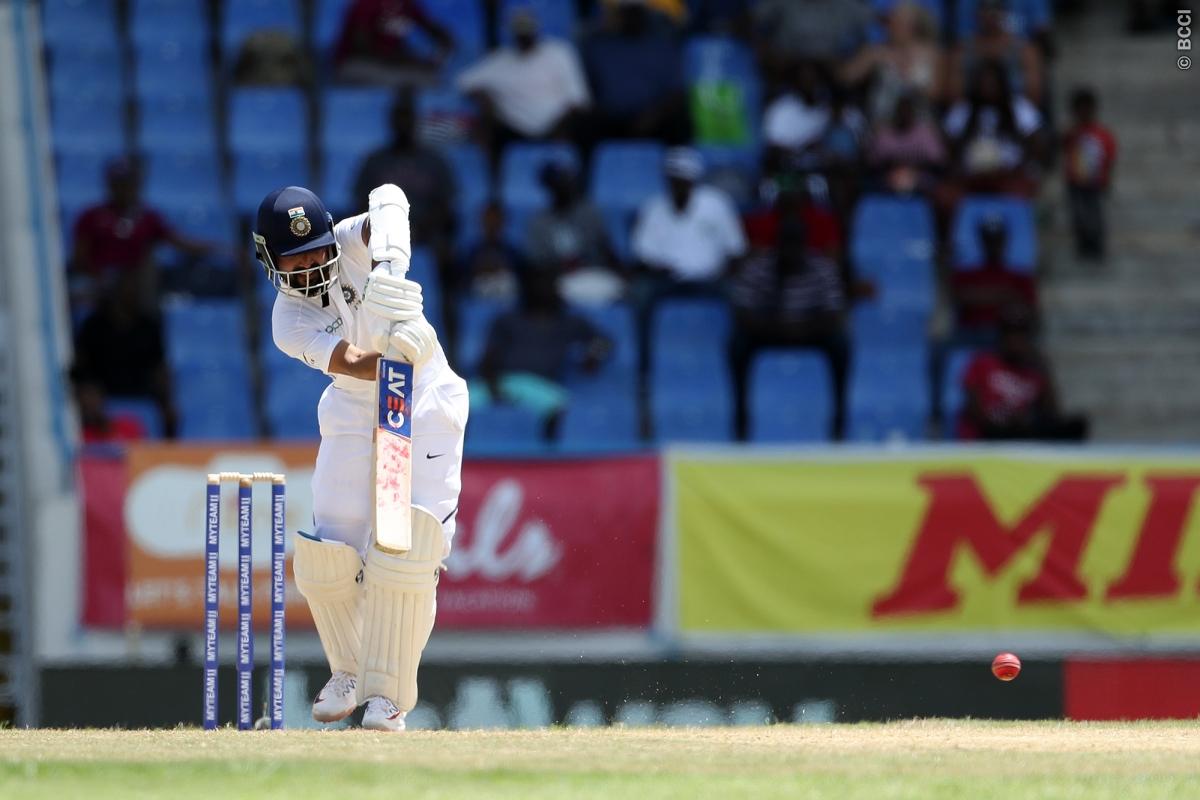Technique the difference between masterclass and a disaster-class in New Zealand
New Zealand and India are two of the toughest places to play, where the technique is a determining factor between a master-class and a disaster class. Even the greatest of batsmen- Sir Alastair Cook, Virat Kohli and Sachin Tendulkar have struggled in comparison to the numbers they put elsewhere.

The reason for it, very often, the technique, the ability to adjust to the toughest of conditions in an instance. With a pace attack of Neil Wagner, Tim Southee and Trent Boult with the gentle swingers from Colin de Grandhomme, the attack might not look overly daunting until you face the wrath. In the past, England with the best of teams have crumbled in a jiffy against the pace attack, when Trent Boult took a fifer. In 2009, in a similar condition, India with the top-order of Gautam Gambir - Virender Sehwag and middle order of Sachin Tendulkar, VVS Laxman and Rahul Dravid failed. The reason, the inability to adapt instantly to the conditions and at times due to their overly-aggressive approach.
In that particular Test in the first innings, the dominant Indian batting line-up crumbled, thanks to not using their famous-footwork, with Sachin and Laxman getting out poking the delivery outside off. And when Virat Kohli did poke one outside off against Kyle Jamieson, he was not the first Indian and will not be the last Indian to poke one. Kohli’s dismissal was a result of two things - overly ambitious shot chasing one wide off, the other New Zealand’s nagging line and length. The build-up for that dismissal was awfully similar to how James Anderson setup Virat Kohli in the 2014 series in England, tempting one outside the off. An over before the dismissal, Jamieson kept bowling it outside off after peppering a bouncer first-up.

 Virat Kohli's dismissal against Kyle Jamieson © Sky Sports
Virat Kohli's dismissal against Kyle Jamieson © Sky SportsThe over later was when Kohli was perfectly trapped by the lanky pacer - first up an overpitched one outside off, then a back of a length delivery and a repeated full delivery. Then a back of a length and then perfectly one on a good length - neither full or short, pitching right in the corridor of uncertainty for the Indian skipper.
Pitching on the good length 6m away from the stumps, Jamieson got the ball to seam just the little bat to get the edge of Virat Kohli. Otherwise too, without the deviation, if you carefully notice the Indian skipper’s blade, you can see that the face of the bat is towards the cover, with an open face and hard hands which allows the ball to safely travel to the slip fielder.
In 2014, Ajinkya Rahane played one of the best innings in Wellington, a place which has haunting memories for the Indian team. And, his secret behind the hundred and the innings, simple - foot movement towards the ball and playing it with a lower backlift and soft hands. What that does is, takes away the slip fielder from play, which is one of the biggest areas of dismissal in New Zealand. Second, it nullifies the late swing, with a lower backlift, allowing the batsman to move quickly and adapt himself to the swinging condition. And it also allows the batsman to move on the front foot to drive through the covers. Another instance when Rahane showed the Indian batsmen how to play in the 2020 series is when he was taking the attack to the Kiwi bowlers. His head too, unlike Kohli’s, is not restricted to one particular section of the ground.

 Rahane's hand-eye co-ordination that helps him in New Zealand © YouTube
Rahane's hand-eye co-ordination that helps him in New Zealand © YouTubeTendulkar, in the 1998 Test against New Zealand in Wellington, played a special inning. It had the combination of late cuts, foot movement to negotiate swing and some elegant straight drives that took the slip fielders out of the equation. Look at the below image, Tendulkar’s stance against the pace bowlers and his hand-eye coordination is what separates ordinary batsmen from the others in such tough conditions. Sachin’s steady approach with his foot, his eyes firmly on the ball watching it late till the point of contact helps him make optimal contact with the bat. Further, the face of the bat is closed, which means the edge will not carry to the slip fielder.

 Sachin's straight-approach to avoid a dismissal © YouTube
Sachin's straight-approach to avoid a dismissal © YouTubeHow to negotiate swing with foot movement?
For an opener or even a top-order batsman, it is crucial in New Zealand to have an agile foot movement. The lack of it will make it easier for the bowler to negotiate with the swinging condition as even the slightest ones outside off will result in edges due to uncertainty. Former Indian opener Gautam Gambhir, who’s 137 will go down as one of the best Indian performances in foreign conditions, is the best example. The gigantic effort, 643 minutes at the crease, facing 436 deliveries, Gambhir’s grit, patience and innovation were what helped India save the Test from the hands of a possible defeat. The southpaw showed grit, battling with the new ball, leaving deliveries outside off and attempted late-cuts and drives to the ones that were there to attack. In particular, Gambhir was clever enough to leave the ball just at the start of the triangle and moreso, waited till the bowler delivered a straight one for him to drive it down the ground.
Look at Gambhir in the image, he is taking a stance way outside the batting crease, which will help in countering the lines and length that the pacer is going to land the ball. Also, it allows Gambhir to get to the delivery even when there is a late swing on offer for the bowlers stark in contrast with when he is batting at the crease. And against the short balls, Gambhir takes a shuffle to a deeper stance which helps him make a late impact negating the influence of the gully fielders or the third slip.

 Gambhir on the front-foot © YouTube
Gambhir on the front-foot © YouTubeWhere did India go wrong in the first Test
India were left struggling in the first Test, with partial help for bowlers on Day 1 in Wellington. However, that was not the only reason that they struggled with the new ball. Prithvi Shaw’s dismissal was a classic one of a tentative push, which did not give him time to account for the late swing from Tim Southee. The key to the dismissal is Shaw’s foot-work, look closely at the image, you will notice that Shaw’s front leg is moving towards the leg-side while the back-leg is planted firmly. This is a sign that he is going to play it down the leg-side which puts him in a vulnerable position to late swing which is exactly what happened.

 Shaw's dismissal against New Zealand © Sky Sport
Shaw's dismissal against New Zealand © Sky SportFor Hanuma Vihari, the situation was entirely different. Vihari from the first ball against Jamieson was caught up between his playing it on the back-foot and playing it on the front foot. Even when he scored a boundary off the lanky pacer, a close look at his stance would tell that you that he was playing it on his backfoot to negate the bounce. However, contrary to Jamieson’s height, all his deliveries which fetched him a wicket were on the fuller and good length, which was his biggest strength. Vihari misread it from ball 1, playing the pacer on the back foot, which will not help to counter swing in any conditions. And when Jamieson delivered a fuller delivery on the off-stump moving slightly away from the timber, he struggled to find footwork, eventually leading to a simple catch for BJ Watling behind the wicket.
India’s struggle largely has been because of their inability to counter the late-swing and adjust to the conditions. The solutions for all these dismissals are present right in the archive when the yesteryear players took the field. It is glaring how these batsmen failed to take note of such things with Rahane saying in the press conference that technique matters in New Zealand.
“That was a really special moment for me in Wellington getting my maiden hundred, I remember that my backlift was changing due to the wind, I played it with a low backlift last time. As a batsman, you have to change your stance and guard in Wellington because of the wind,” said Rahane in the pre-match press conference and the solution lies right here.

Comments
Sign up or log in to your account to leave comments and reactions
0 Comments